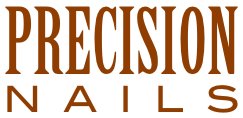Preparing for regulatory changes in the beauty industry would be so much easier if only we were all governed by the same rules and knew what to expect. If that’s our excuse for not being involved and informed, we need to get over it. Within any given state, the same rules apply to all, and even then, many licensees remain ignorant. We shouldn’t waste our time bemoaning the fact that rules vary by state (federal laws excepted) and that national licensing doesn’t exist. No matter how much we complain, the sovereignty of states to govern and protect their respective residents/consumers takes precedence in the absence of federal authority.
As salon owners and beauty professionals, we focus primarily on providing services to our clients, investing in products and continuing education to stay current. We don’t have much time or other resources to devote to governmental affairs seemingly beyond the salon. That’s unfortunate given the power of government to control how we work.
We often hear that it takes "political will" to achieve regulatory change. This common, but rather ambiguous, term has been given this “dynamic” definition in a very interesting research paper (presented to the 2008 Annual Meeting of the National Communication Association):
"Our ideal-type definition of political will requires that a sufficient set of political actors with a common understanding of a particular problem on the public agenda genuinely intends to support a commonly perceived, potentially effective policy solution. This definition includes four different components, which we deem necessary conditions:If political will doesn’t seem relevant to your work, consider this. Many of the greatest challenges facing our industry are regulatory in nature: unlicensed activity, employment law, health and safety, education, etc. Can we expect legislators and bureaucrats to address problems without some guidance? How are they to know that a problem even exists? What evidence will they gather and which experts will they consult? What are the consequences, intentional or not, of the proposed solutions? When we allow changes in our industry to happen without our influence or support, it’s not likely that we’ll welcome them. Conversely, when we tolerate inequities, incompetence and obsolescence in our governance, we’ve failed ourselves as professionals.
- A sufficient set of political actors
- With a common understanding of a particular problem on the public agenda
- Genuinely intends to support
- A commonly perceived, potentially effective policy solution."
(Post, L., Raile, A. & Raile, E., "Defining Political Will," p. 5).
Apathy does not solve problems; in fact, it can create even more. Not long ago, some legislators in Indiana and Florida (among other states) wanted to deregulate the beauty industry. The potential consequences of such deregulation motivated beauty professionals and consumer advocates to lobby against this, but what would have happened had they failed to act? No matter how obvious or necessary something may seem to beauty professionals, what we consider “best practices” will not be reflected in legislation/regulation without active participation.
In past articles, I’ve been very vocal about being proactive, rather than reactive, to government, particularly at the state level. To learn more about how your state board operates, visit its website, sign up for email notifications and read the rules, meeting agendas/minutes, reports and public notices. Doing this research doesn’t cost anything (except time), but it won’t change anything either unless you use that information.
It may seem hard to believe, but an individual can influence the governing process. If you really want to make a difference, you need to be seen and heard at board meetings, and not just once. With consistent effort, your concern can evolve from a a public comment during a board meeting to a regulatory change, with the necessary steps in between. For example, I want California’s Board of Barbering and Cosmetology to enforce its laws prohibiting mobile services, or change its laws to protect consumers and establishment owners from unlicensed activity. After I made a public comment, the issue was placed on the next meeting’s agenda, prompting the board’s staff to research other state’s laws and make its own recommendations.
When issues concern me, even if they’re not directly related to my work as a manicurist and salon owner, I will freely express my opinion. For example, proposed legislation (in California’s state assembly) to authorize advanced skin care licensing does NOT have my support, as I’ve made clear in this statement to my colleagues:
As an advocate for the beauty industry, I want you to be aware of proposed bill AB 1153, introduced by Assembly Member Susan Talamantes Eggman District 13. If successful, this bill would give California’s Board of Barbering and Cosmetology the authority to license "master estheticians," requiring an additional 600 hours of "practical training and technical instruction" beyond what's currently required (1600 hours for cosmetologists, or 600 hours for estheticians).
More important, if this bill becomes law, it would redefine and expand the scope of practice of “master estheticians” to include body treatments (wraps, scrubs, etc.), currently unregulated services that your business may offer. In effect, this law would require that establishments like yours would have to use licensed "master estheticians" to provide these services.
If you’re concerned about the potential impact of this bill on your business, please contact your legislator to express your thoughts.
By Jaime Schrabeck, Ph.D.



